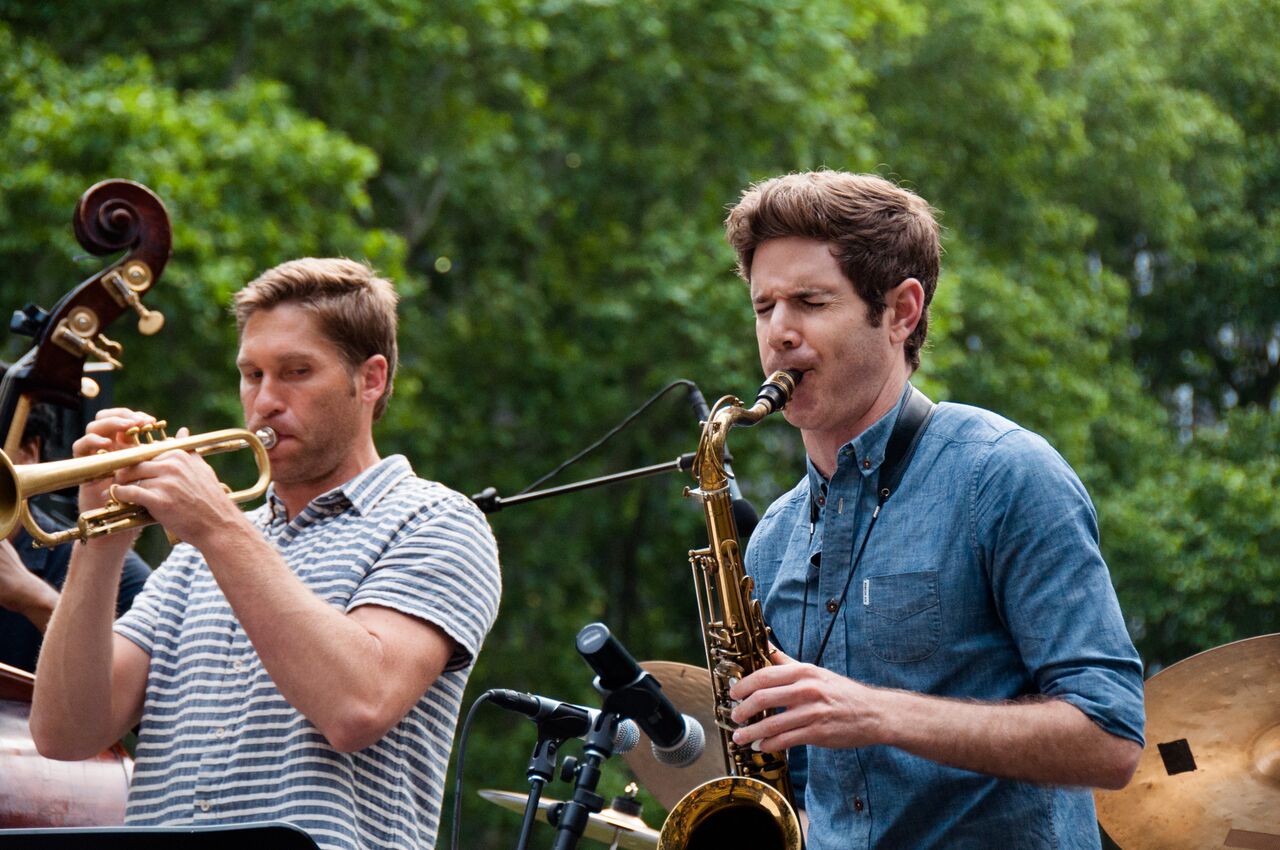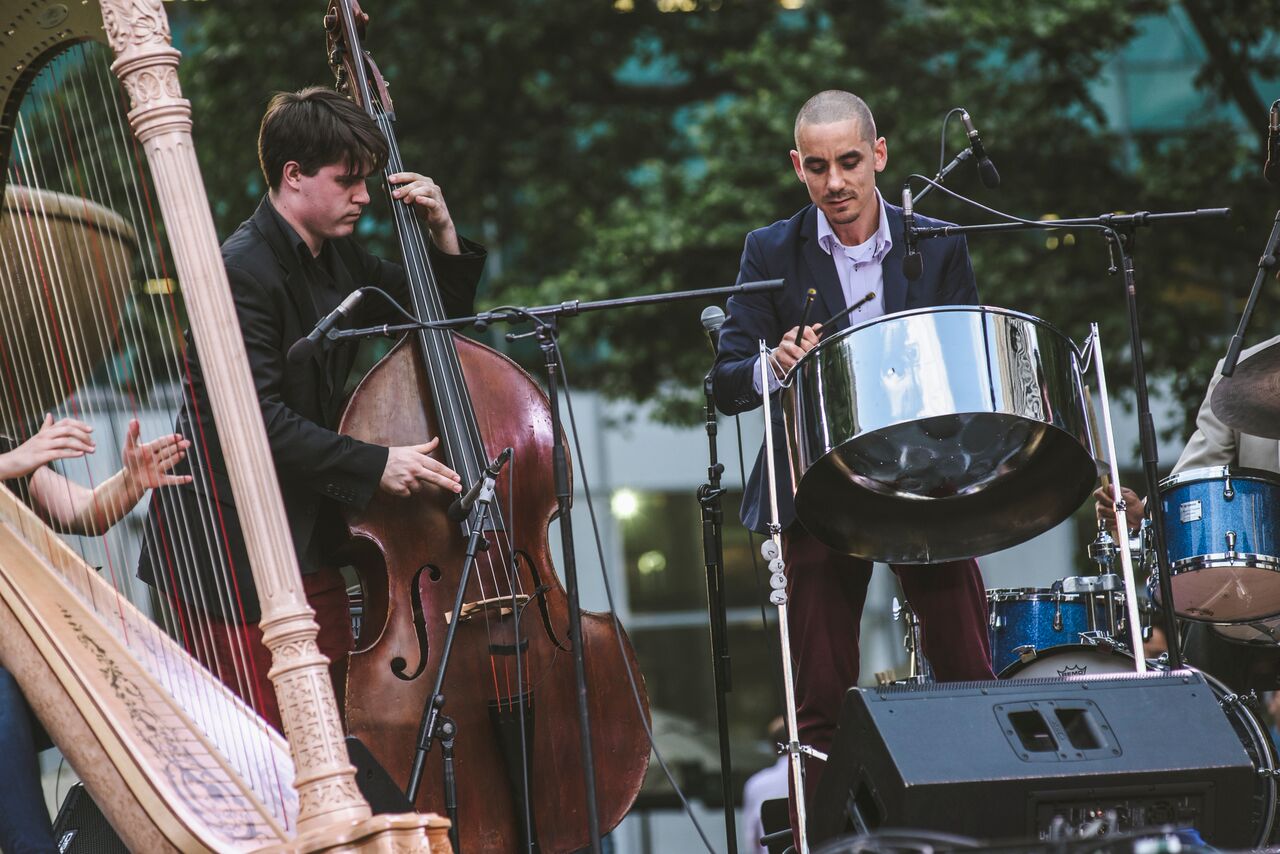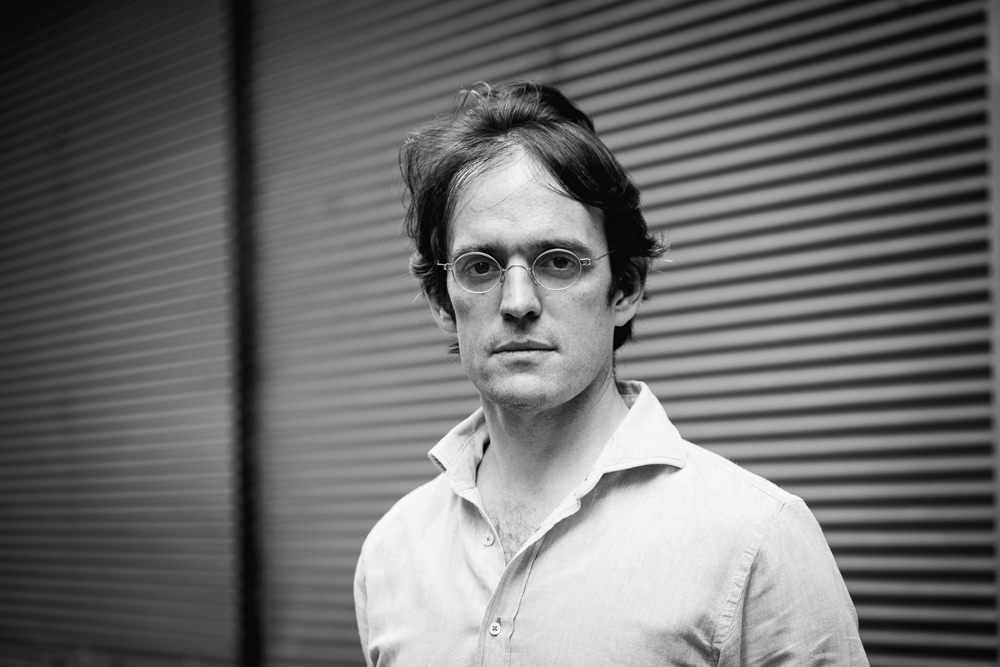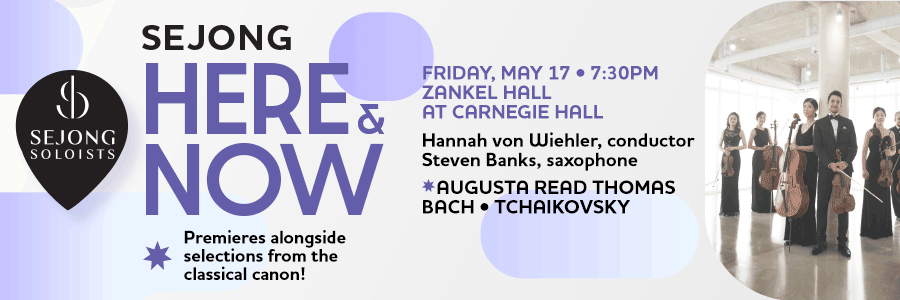Concerts in the Park and Modes of Listening to New Music
[Ed. Note: Through the summer, composer/arranger/saxophonist Patrick Zimmerli has curated a series of free outdoor concerts in New York City’s Bryant Park. “Breaking Boundaries,” the final concert of the 2016 series which takes place on Friday, August 26, 2016, from 5 to 10 p.m., will feature cellist Inbal Segev, harpist Bridget Kibbey with violinist Kristen Lee and percussionist John Hadfield, the Kenari Saxophone Quartet, the Dan Tepfer Trio with SEVEN)SUNS, and Zimmerli’s own quartet. We asked Zimmerli to share his thoughts on why outdoor concerts are the ideal entry point for people curious about adventurous music.–FJO]
As a composer, I’ve had occasion to think a lot about how to listen to all kinds of music. I’ve pondered ways of hearing Bach fugues and Mozart sonatas and Schoenberg rows and Babbitt superarrays. As a teenager, I also transcribed lots of jazz solos— Bird, Coltrane, Miles, et al.— straining to hear the most fleeting nuances in their improvisations.
I taught ear training and musicianship courses at Columbia University for several years, watching students whose natural aural abilities—as well as their means of taking in and understanding organized sound—were about as singular as their fingerprints. And I’ve seen and heard audiences in concert halls of every shape and size react to all kinds of music, familiar and unfamiliar. Through all this experience, I’ve developed a sensitivity to the problems of listening to music in the 21st century.
Problems of Listening
Some problems of listening to contemporary music were poignantly outlined by Maia Jasper White in her soulful piece on NewMusicBox. Maia touched on the central problem of simultaneously satisfying people with wildly disparate levels of listening experience.
This is something that many composers really don’t sufficiently take into account. The divide between the new music connoisseur and the average person is larger than ever, and the vast majority of people just have no context or experience to be able to deal with music that’s on the knife-edge of contemporary composition. (I kid you not—there are music lovers out there who are so far from the fine distinctions in which we traffic as to not know what a piano is!) While those listeners may seem so far from our target audience as to be irrelevant—especially in this world of narrowcasting—it’s worth taking stock of the great distance contemporary music has travelled from the mainstream.
The split began gradually, as what we now think of as “classical” music grew away from its traditional base, took on the weight of a “tradition,” and ultimately became an academic discipline. Sonatas, rondos, and scherzos, originally organic outgrowths of popular dances, are now forms to be learned in school. With classical music’s increasing departure from its roots in popular culture came modernism. Twentieth-century composers, building on the past, wanted to transcend their predecessors, they wanted their increasingly complex notes and sounds to be heard and absorbed, their winding narratives taken in and comprehended in their entirety. In their search for purity, they wanted their pieces subjected to contemplation rather than applause—to the point that the practice was even entirely banned in Arnold Schoenberg’s Society for Private Musical Performances.
A similar trajectory has been followed in jazz, where what was once a dance/entertainment genre has ascended to the realms of high art. Simple forms like the rhythm changes and blues have come to be played in such an abstract way that even listeners with a very sophisticated understanding of classical music often have no idea of their underlying repetitive structures. At the same time places like the Village Vanguard, once smoke-filled venues where music was played over a constant thrum of background chatter, have become churchlike spaces, where listeners take in the music in reverent silence.
More recently there’s been a backlash against the imposed silence of the art-listening experience. With the opening of spaces such as (Le) Poisson Rouge nearly a decade ago, venues began to be created where classical music could be re-positioned and re-connected to its past in an informal setting, where people could applaud freely and even chat, much as at a vintage jazz concert (though at the performances I’ve been at, they mostly don’t).
Instead of one view prevailing or holding sway, we now have a situation where a small number of incredibly knowledgeable experts coexist with a sprawling field of listeners whose level of commitment and knowledge is in inverse proportion to their numbers. How on earth can all these people be satisfied simultaneously?

Trumpeter Shane Endsley (left) and tenor saxophonist Ben Wendel (right) of the Ben Wendel Group during their performance at Bryant Park on June 8, 2015 (Photo courtesy Bryant Park Corporation.)
An Outdoor Solution
These thoughts were occasioned by the first concert I curated for New York’s Bryant Park this summer, as part of the IN/TERSECT festival. The idea for the series is to bring together new music from the jazz and classical domains. Each concert in the festival features five ensembles, either jazz or classical based or related, each playing new music, including for each evening one ensemble that had recently been granted a Chamber Music America New Works grant in either the jazz or classical categories.
I was quite enthusiastic when Ethan Lercher, the visionary behind IN/TERSECT, contacted me to curate the series, as I’d always loved Bryant Park. It’s so centrally located in Manhattan that I felt the concerts couldn’t help but attract attention, and indeed they have been exceptionally well-attended for new music events, drawing crowds of up to 2500.
The park is directly behind the New York Public Library, between 5th and 6th avenues and 40th and 42nd streets, and the stage faces a large lawn. There are chairs set up on the part of the lawn nearest the music, and the rest is free for blankets or for people just to lie down or play. The greenery, while manicured, manages to be totally welcoming—the low trees surrounding the lawn give the feeling of shelter from the urban streets. And the park is encircled by the most awe-inspiring urban architecture—look to the west and you see such storied 21st-century skyscrapers as the Bank of America building and the newly completed 7 Bryant Park, with its fabulous conical cutouts; the Grace building to the north, with its seductive outward curve, is a late-20th century precursor; to the south is the magnificent Radiator Building, designed by Raymond Hood, futurist architect of the ‘20s and ‘30s; and of course the New York Public Library, designed and completed over the first decade of the 20th century, sits in Beaux-Arts grandeur to the east. The buildings form a veritable compendium of aesthetic ideas of the last century, and thus provide an interesting context for hearing new music. It’s certainly an auspicious mélange for a festival that looks to bridge styles.
A Rich Sonic Experience
The concerts are necessarily amplified, which might dampen the enjoyment of those who think of classical music performances as one of life’s last pleasures to be completely unmediated by electronics. But Bryant Park has taken great pains—and has incurred great expense—to ensure a natural, rich sound in all areas of the park. They’ve invested in a very good mixing board, new speakers, and other equipment, and rent the best quality microphones available.
In addition, they took the step of hiring the legendary Tom Lazarus as an audio consultant for all three evenings. Tom is a recording engineer who worked for Sony Classical in its heyday, but he also has a sophisticated knowledge and understanding of jazz. Tom’s fantastic intuitive sense for sound, combined with a very high standard, has been hugely helpful in ensuring that everyone from the very front row to the back of the park had a completely naturalistic listening experience, with a full, well-blended sound.
In the second concert, for example, The Westerlies, an outstanding young brass quartet of two trumpets and two trombones that plays original music as well as covers of composers like Ives and Machaut, played with a gorgeous, velvety sound; their extremely nuanced, detailed performance came through the speakers immaculately. Even the notoriously-difficult-to-mic string quartet sounded very natural—the Argus Quartet’s passionately committed performance of Eric Guinivan’s String Quartet, and their exquisite rendition of Beethoven’s Op. 59 No. 2, hit the public’s ears with a warm, full sonority.
Varieties of Listening Experience
I wanted to emphasize the quality of sound at IN/TERSECT to make the larger point that, for sophisticated listeners, the intense, focused concert experience remains available. True, there is ambient noise from the surrounding streets, but the amplification pretty well offsets that. On the first evening, we featured violist Andy Lin (of Amphion Quartet fame) and his sister Kelly, who played a somewhat intricate piece by Korean composer Alvin Tam; its every detail was available for connoisseurs to ingest.
On the other hand, you could just pass by and take in a few notes, listen from afar on the lawn, chat with a friend or wander off if you were getting bored or there was a part you disliked. With most new music concerts at destination venues, it’s very unusual to be able to dip your little toe in like this.

Andy Akiho and The Foundry performing during the June 10, 2016 IN/TERSECT concert in Bryant Park. Photo by Ryan Muir (courtesy Bryant Park Corporation).
Modes of Listening
New music has been as much about challenging modes of listening and perception as anything else. Schoenberg created his Society for Private Musical Performances out of a dissatisfaction with the traditional ways that audiences approached music. Schoenberg had a much higher standard of listening—in Style and Idea he disdains those who cannot easily take in both a main and subordinate theme simultaneously, and famously derides composers only familiar with half of Brahms’s complete output. Schoenberg’s concerts were places where a small but highly cultured, knowledgeable, and devout audience could gather and bring a tremendous, hitherto-unheard-of level of focus and intensity of listening to the concert experience.
That focus and intensity has gradually been institutionalized within classical and new music culture. Today there are any number of new music concerts where small audiences go to inspect music in great detail (based on an abundance of prior knowledge) that to the uninitiated would carry little meaning. And indeed, in so lifting the standards of listening, Schoenberg and his descendants have left huge swaths of humanity entirely behind.
What was most wonderful to me about the park experience was that all modes of listening were available simultaneously. Sure, you could sit in the front row and scrutinize Sandbox Percussion’s performance of Johnny Allen’s Sonata, with its multiple interpretive modes; you could revel to the minute details of Jonathan Finlayson’s trumpet stylings or hang on every note of Chris Potter’s soloistic flights.
But at the same time there was no pressure to do any of the above. The ambient noise from the surrounding city streets is at a level that makes chatting with a neighbor not feel out of place in the back rows of the seating area, and there are many people who are spread out on blankets on the lawn, or even playing frisbee, as the music washes over them.
I guess Brian Eno beat me to this observation by a couple of decades, but—as someone who’s spent so much time on focused listening—I still believe there’s something really amazing about background music. Indeed—there’s something amazing about new music as background music. One of the most memorable moments during the first concert came for me when I took a full loop around the exterior of the park during the performance. Sandbox Percussion was playing a lovely piece by David Crowell, a very interesting young composer hailing from Alaska. As I was walking through the park, I thrilled to the sound—as did many seated on the lawn—of Crowell’s rhythms pinging serenely off of the surrounding buildings in stereophonic splendor. The content of the music was interesting but it almost didn’t matter; it was the simple fact of mallet instruments playing in concerted rhythm—mixing into and civilizing the chaotic sounds of the city—that was so sublime. The music that we often so minutely scrutinize, that we routinely talk about at levels of detail elusive to the everyperson: can it be that it all boils down to “Ahh, nice mallets pinging into the night air”?
I guess the answer to that is, “It depends.” It depends on who you are. It depends on your level of musical experience, on what you bring to the occasion. It depends on what you expect, what you want, what you think music could or should be. And, unlike almost any new music concert I’ve attended, the IN/TERSECT festival offered a rewarding experience for people with an amazing variety of those levels, those expectations, those desires.
Patrick Zimmerli is a New York and Paris-based composer and musician. He has written and performed numerous works for jazz and classical musicians, among them jazz saxophonist Joshua Redman, the Escher String Quartet, jazz pianist Brad Mehldau, the Paris Percussion Group, and Bralizian vocalst Luciana Souza.




